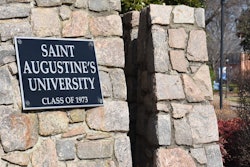The Hip-Hop Evolution
“I remember the day I fell in love with hip-hop,” begins the opening scene of the 2002 romantic comedy “Brown Sugar,” where Sanaa Lathan’s character Sidney stands, alongside her childhood friend Dre (played by Taye Diggs), mesmerized by the lyrical flow of the young MCs on a New York City neighborhood basketball court. As Sidney and Dre evolve from adolescence to adulthood, hip-hop, near and dear to their hearts, evolves as well. “Sid,” Dre and hip-hop grow in tandem. Hip-hop influences their relationships, both professional and personal, playing a significant role in the defining decisions of their lives, and at the end of the day, i.e. movie, when they choose each other, they also choose hip-hop, accepting their shared fate.
There is a lesson for hip-hop observers in “Brown Sugar,” where the music’s influence transcends the realm of entertainment, permeating the character’s identity and values. Although the film romanticizes the relationship, it does speak to a prevailing question that has begun to invade discussions of hip-hop music and culture among its advocates and critics alike — “who’s playin’ whom?” — that is, to what extent is the music pulling the strings of its fans, or vice versa.
The question is being asked on campuses around the nation and not just by faculty or administrators deemed “out of touch” with youth culture. As correspondent Pearl Stewart reports in this edition of Black Issues, it is being asked by students as well. Stewart surveys the scene at several historically Black colleges and universities, where the pervasive influence of hip-hop culture on campus life — heightened by exposure to cable outlets such as BET and MTV— is a concern among many.
As of yet, the true influence of hip-hop culture on today’s youth is circumspect. Soon, however, that will not be the case as senior writer Ronald Roach reports on scholars engaged in empirical research and sociological studies to determine exactly what impact the music and related media images are having on their young audiences. “At one level, we need to document the genre. On a more sophisticated level, we need to determine how African American and Latino students perceive their social identity with respect to hip-hop’s content, expressions and context,” one scholar says.
At the same time, the overwhelming presence of hip-hop culture provides one of those rare opportunities where the academy and popular culture can’t help but merge. From HBCUs to Ivy Leagues, from East Coast to West Coast, a new generation of scholars has emerged on campus armed with years of both traditional classroom learning and modern social learning, via popular music and culture. Along with their arrival, a new trend in hip-hop scholarship has emerged. These scholars recognize the subgenres within the field, but most importantly, they are not afraid to criticize the negative elements within those categories. In doing so, as assistant editor Kendra Hamilton writes in Faculty Club, they are “poised to make a little noise of their own.”
Robin V. Smiles
Associate Editor
© Copyright 2005 by DiverseEducation.com















